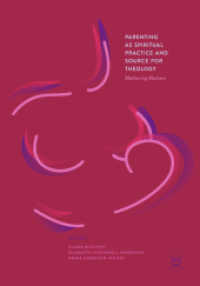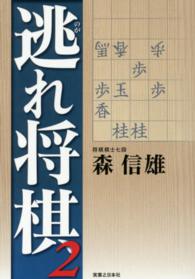- ホーム
- > 洋書
- > ドイツ書
- > Mathematics, Sciences & Technology
- > Technology
- > construction & environment engineering
Full Description
This book is focused on the challenges of digital transition in building construction, and potential solutions through the use of multi-criteria analysis. It provides clear explanations of proposed approaches from both a theoretical and practical point of view, including augmented reality and user-reporting.
New Approaches for Multi-Criteria Analysis in Constructions begins by explaining classic multi-criteria analysis methods, such as Analytic Hierarchy Processes and the Simos-Roy-Figueira method, before moving on to discuss Augmented Reality - Decision Making. This new approach provides a tool to investigate user's perceptions, and utilises an interactive experience of the real-world environment combined with classic methods to provide a large amount of visual information. Finally, a detailed guide to user-reporting is presented.
Offering new possibilities for applying multi-criteria analysis in a simpler, faster and more accessible way, this book supports analysis which considers users experience and perception. Architects, engineers, researchers and practitioners will be able to utilise augmented reality environments, multi-criteria analysis and user reporting for the building design choices, supply selection, maintenance strategies, risk and complex performance assessment.
Contents
Introduction.- The Analytic Hierarchy Process in the Building Sector.- Augmented Reality to Support the Analytic Hierarchy Process.- How to Set a User-Reporting Supported Decision Making in Architectural Engineering and Building Production.- AR-AHP to Support the Building Retrofitting: Selection of the Best Precast Concrete Panel Cladding.- User Reporting and AHP to Investigate the Perception and Social Acceptance of Wind Energy.- User Reporting and Condition Ratings to Support Building Maintenance and Diagnostics.








